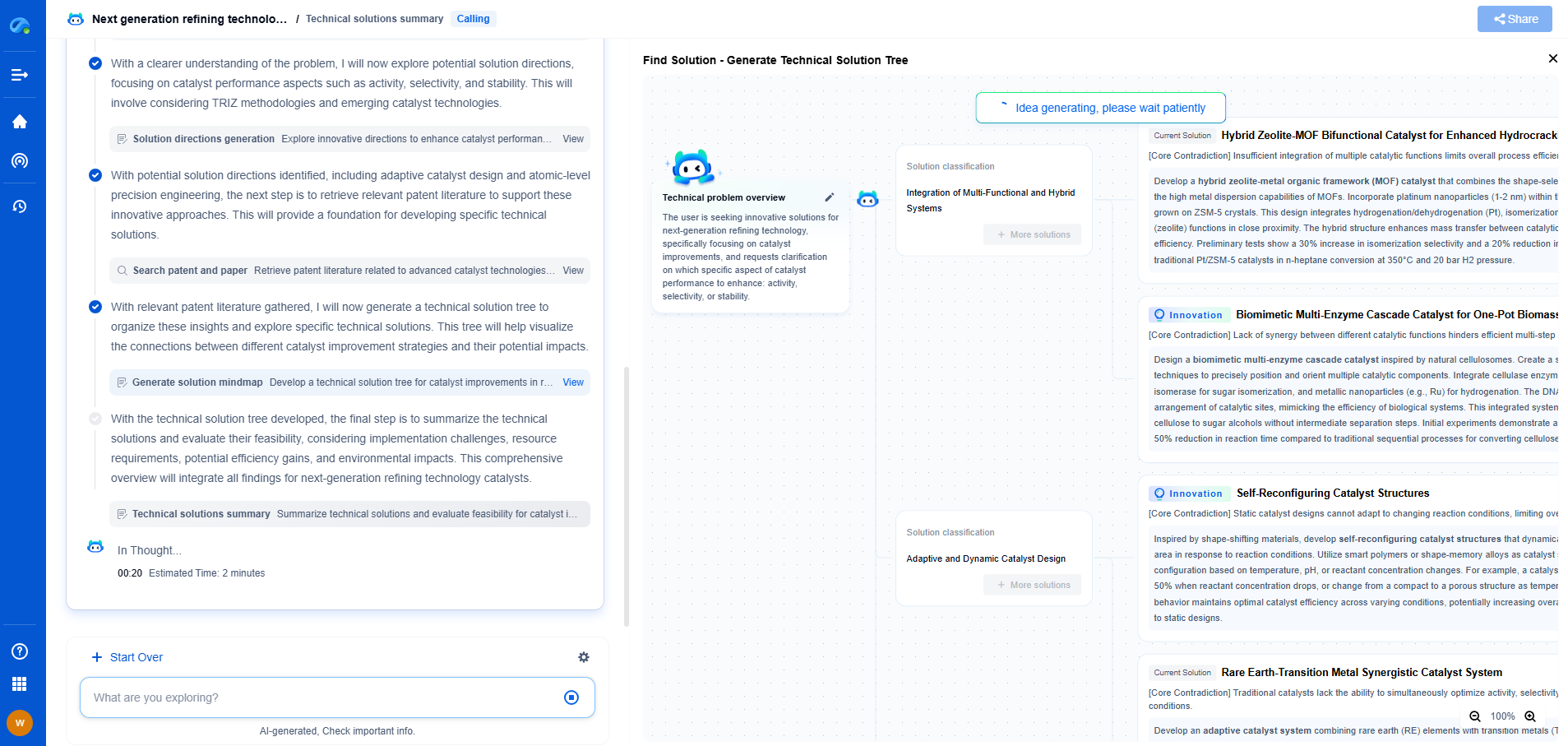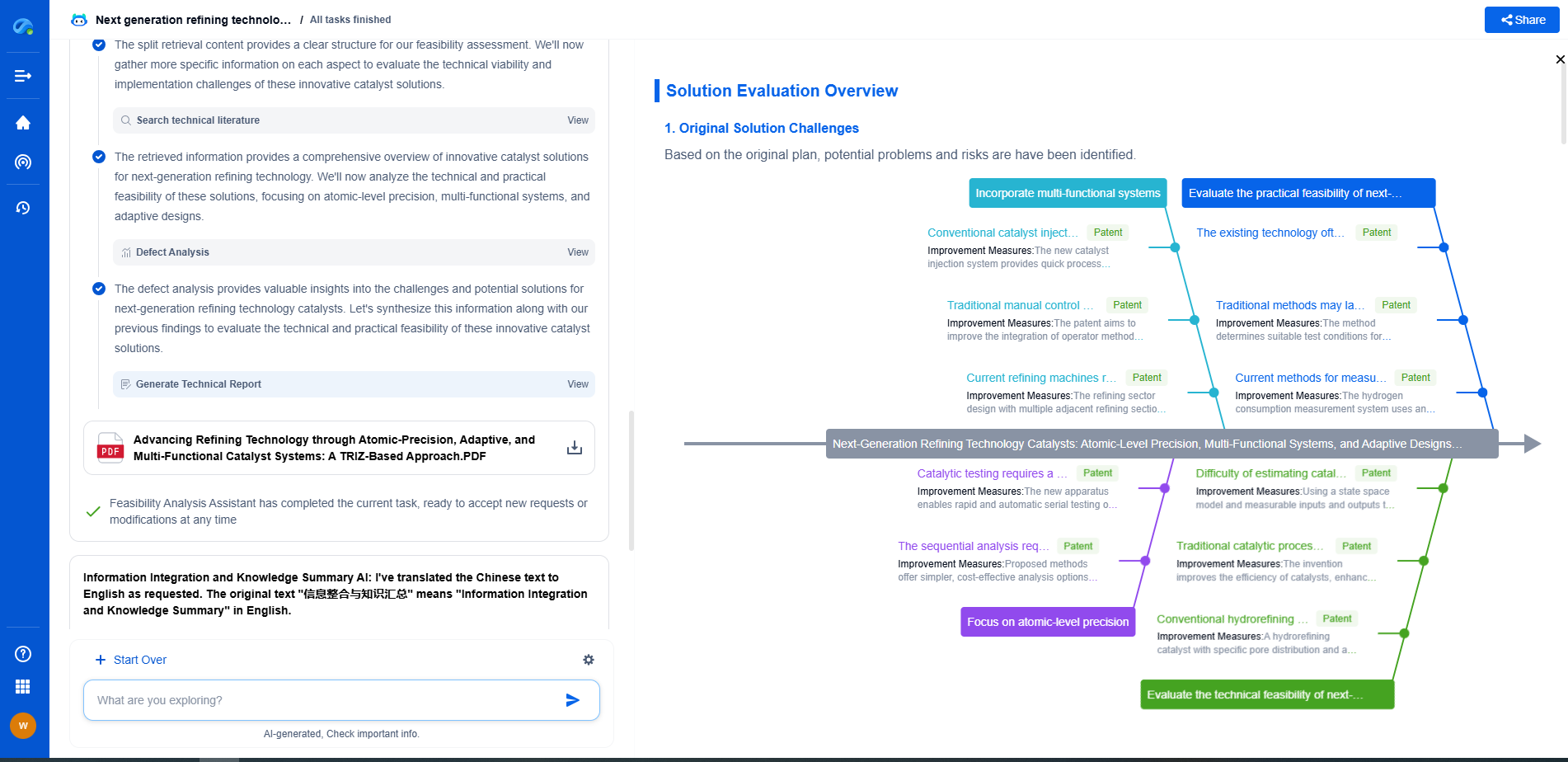Reducing Fluorescence Background in Raman Spectroscopy
JUL 15, 2025 |
Raman spectroscopy is a powerful analytical technique used to observe vibrational, rotational, and other low-frequency modes in a system. It has widespread applications across various fields, from chemistry and materials science to biology and medicine. However, one of the major challenges researchers face when using Raman spectroscopy is the interference caused by fluorescence background. This unwanted background can obscure the Raman signals, making it difficult to obtain clear, interpretable data. Understanding the sources of fluorescence and how to mitigate its effects is crucial for improving the accuracy and efficacy of Raman spectroscopy.
Sources of Fluorescence Background
Fluorescence background in Raman spectroscopy typically arises from electronic transitions within the sample or the surrounding medium that are excited by the laser source. When the laser light interacts with certain materials, these materials can absorb the energy and re-emit it as fluorescence, which often appears as a broad and intense background in the Raman spectrum. This background can overwhelm the weaker Raman signals, complicating data analysis and interpretation. Fluorescence can originate from a variety of sources, including impurities, the sample matrix, or specific components within complex mixtures.
Strategies for Reducing Fluorescence Background
Several strategies can be employed to reduce fluorescence background in Raman spectroscopy, enhancing the clarity and reliability of the results:
1. **Wavelength Selection**: Choosing an appropriate laser wavelength is one of the most effective ways to minimize fluorescence. By selecting a laser that does not overlap with the electronic absorption bands of the sample, you can significantly reduce fluorescence emission. Near-infrared (NIR) lasers, for example, are often used because they are less likely to excite fluorescence compared to visible light.
2. **Time-Gated Raman Spectroscopy**: This technique involves the use of ultrafast lasers and time-resolved detectors to separate Raman signals from fluorescence. By exploiting the difference in lifetimes between the instantaneous Raman scattering and the slower fluorescence emission, time-gated spectroscopy can effectively filter out the unwanted background.
3. **Photobleaching**: Exposing the sample to continuous laser illumination can lead to photobleaching, where the fluorescent molecules are gradually broken down and their fluorescence diminishes over time. While this method can be effective, it requires careful control to avoid damaging the sample or altering its properties.
4. **Sample Preparation and Purification**: Improving sample purity and preparation can also reduce fluorescence. Techniques such as recrystallization, column chromatography, or the use of high-purity solvents can help to remove fluorescent impurities, leading to a cleaner spectrum.
5. **Quenching Agents**: Adding quenching agents to the sample can suppress fluorescence by interacting with the fluorescent species and either deactivating them or altering their electronic states so that they do not fluoresce.
Advanced Techniques for Enhancing Raman Signals
Beyond traditional methods, several advanced techniques have been developed to enhance Raman signals while mitigating fluorescence:
1. **Surface-Enhanced Raman Spectroscopy (SERS)**: SERS involves the use of metallic nanoparticles to amplify Raman signals. The enhanced electromagnetic field near the surface of these particles can significantly boost the Raman signal-to-noise ratio, making it easier to differentiate between Raman signals and fluorescence.
2. **Resonance Raman Spectroscopy**: By tuning the laser wavelength to match an electronic transition within the sample, resonance Raman spectroscopy can selectively enhance specific Raman signals related to the transition, providing a way to focus on particular modes while ignoring the background.
3. **Hyperspectral Imaging**: This technique combines spatial and spectral data to differentiate between Raman signals and fluorescence. By analyzing the complete spectral signature of each pixel, researchers can isolate regions of interest and separate them from the background.
Conclusion
Reducing fluorescence background in Raman spectroscopy is essential for obtaining accurate and reliable data. By understanding the sources of fluorescence and implementing appropriate strategies, researchers can significantly enhance the quality of their Raman spectra. Whether through wavelength optimization, time-gating, advanced preparation techniques, or leveraging sophisticated methods like SERS, mastering these approaches will open new avenues for Raman spectroscopy applications, paving the way for more precise and insightful scientific discoveries.
From interferometers and spectroradiometers to laser displacement sensors and fiber optic probes, the field of optical measurement is evolving at light speed—driven by innovations in photonics, MEMS integration, and AI-enhanced signal processing.
With Patsnap Eureka, biomedical innovators can navigate cross-domain insights in optics, electronics, and biocompatible materials, while discovering IP trends across academic, clinical, and commercial datasets.
💡 Fuel your next breakthrough in optical health tech—start using Patsnap Eureka to unlock deep insights today.
- R&D
- Intellectual Property
- Life Sciences
- Materials
- Tech Scout
- Unparalleled Data Quality
- Higher Quality Content
- 60% Fewer Hallucinations
Browse by: Latest US Patents, China's latest patents, Technical Efficacy Thesaurus, Application Domain, Technology Topic, Popular Technical Reports.
© 2025 PatSnap. All rights reserved.Legal|Privacy policy|Modern Slavery Act Transparency Statement|Sitemap|About US| Contact US: help@patsnap.com

